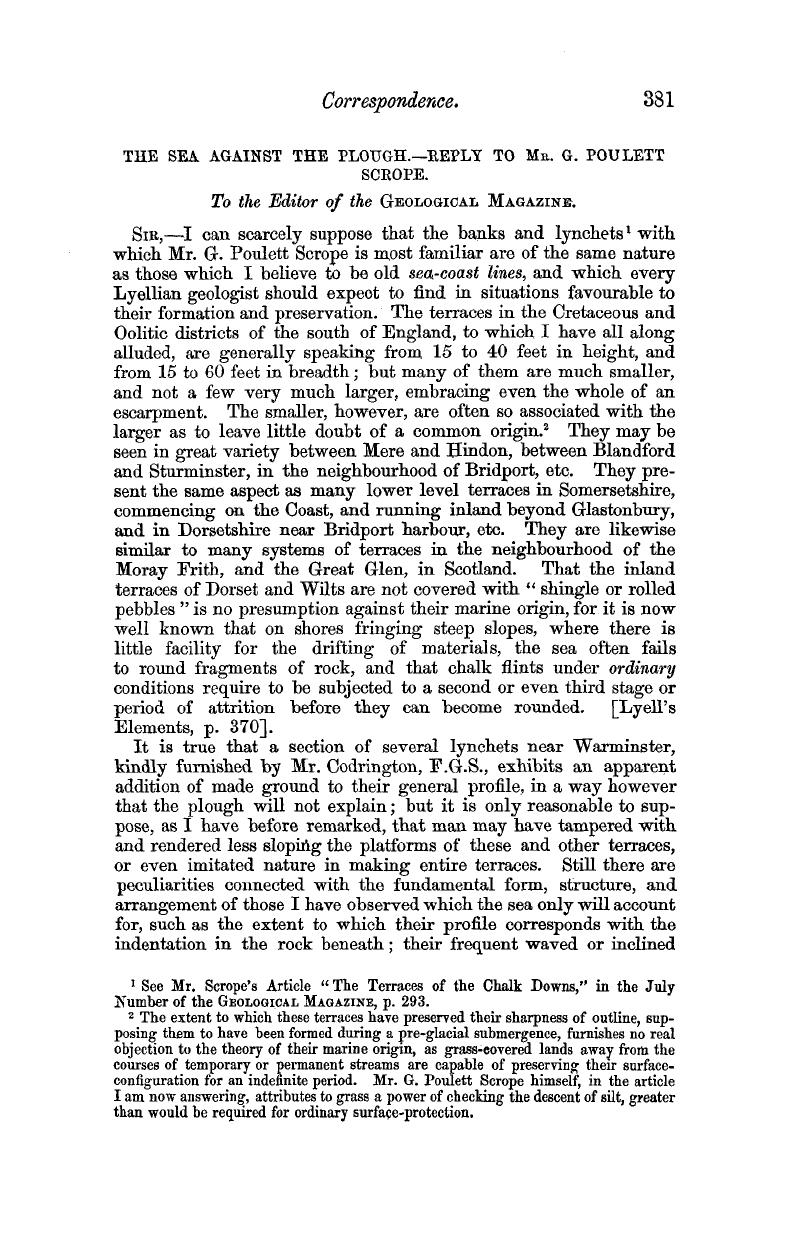No CrossRef data available.
Article contents
The Sea against the Plough.—Reply to Mr. G. Poulett Scrope
Published online by Cambridge University Press: 01 May 2009
Abstract

- Type
- Correspondence
- Information
- Copyright
- Copyright © Cambridge University Press 1866
References
page 381 note 1 See Mr. , Scrope's Article “The Terraces of the Chalk Downs,” in the July Number of the Geological Magazine, p. 293.Google Scholar
page 381 note 2 The extent to which these terraces have preserved their sharpness of outline, supposing them to have been formed during a pre-glacial submergence, furnishes no real objection to the theory of their marine origin, as grass-covered lands away from the courses of temporary or permanent streams are capable of preserving their surfaceconfiguration for an indefinite period. Mr. G. Poulett Scrope himself, in the article I am now answering, attributes to grass a power of checking the descent of silt, greater than would be required for ordinary surface-protection.
page 382 note 1 I should not go so far as to assert that each of the smaller terraces (which are frequently not parallel) indicated a pause in the rise or fall of the land, as we know that the sea often leaves terraces, regular and irregular, between the extreme highest and lowest tide-levels.


